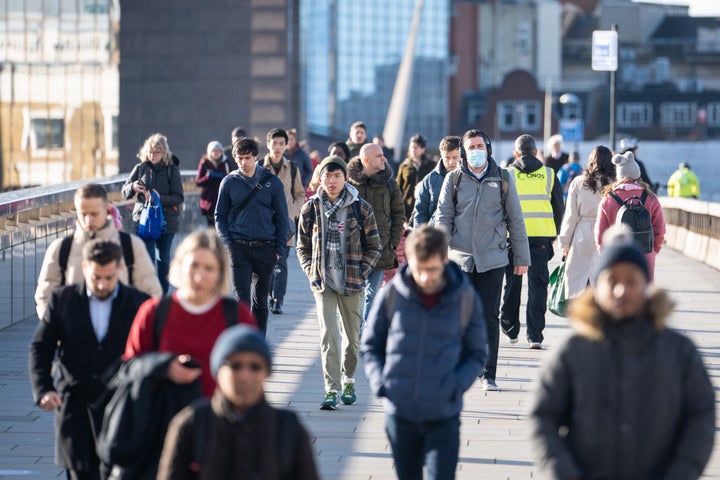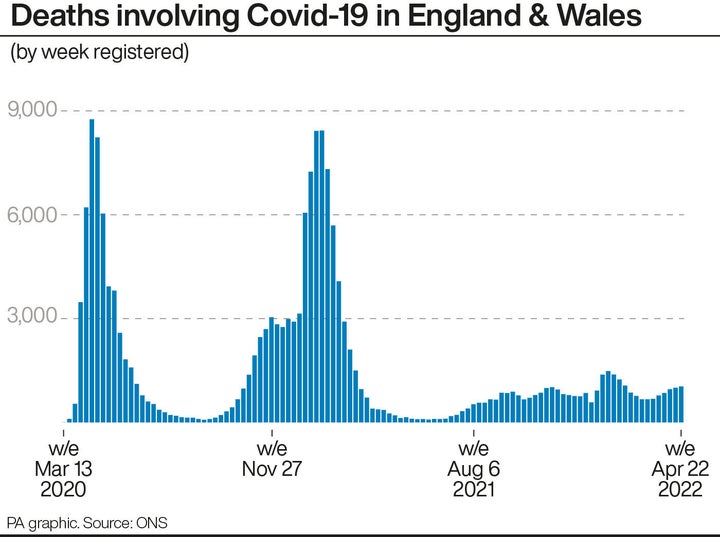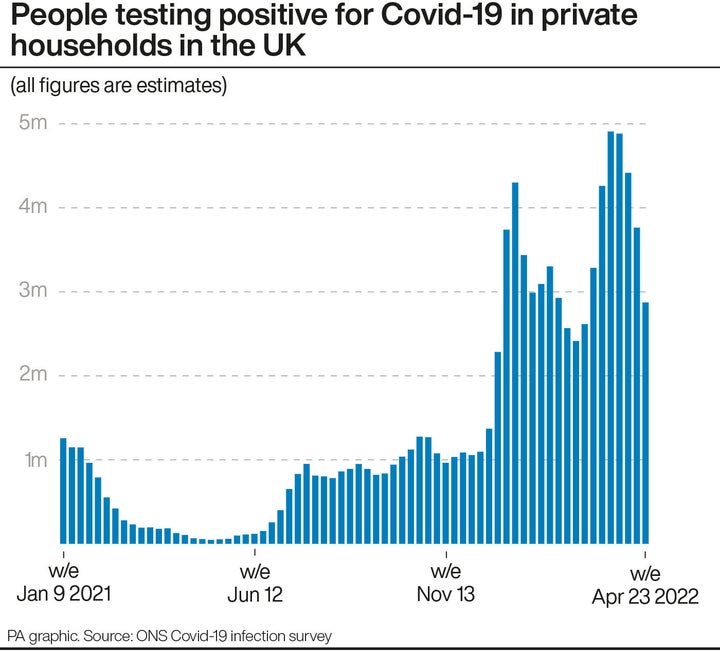
Deaths within 28 days of a positive Covid test have increased for the sixth week in a row in England and Wales, even though infection rates have been dropping.
The Office for National Statistics reported that there were 1,042 cases in the week leading up to April 22 where Covid was listed on the death certificate.
This is a 4% increase compared to the previous seven days, and sadly the highest death rate recorded since February 11.

This isn’t also even the full picture – there’s an expected delay in the data due to the long bank holiday weekend, Good Friday on April 15 and the bank holiday the following Monday.
The national break meant fewer deaths were registered across the country.
However, this is still far below the death toll recorded during March 2020 when the first wave of infection reached the UK long before vaccines became widely available.
January 2021 saw a staggering number of deaths too, as 8,433 were registered in one week.
Rates were also higher in January this year, when the Omicron variant broke through to the general public. At its peak, that wave triggered 1,484 weekly deaths.
Approximately 194,868 deaths in the UK had Covid mentioned on the death certificate – and nine out of 10 had the virus listed as the primary cause.
Why’s this happening now?
While the UK is operating under Downing Street’s ‘Living with Covid’ strategy – meaning all restrictions have been lifted – Infection rates are also falling.

Still, the prevalence of Covid within society is still very high.
A study from March found Covid levels had reached their highest levels, with around one in 16 people in England having the virus.
According to Imperial College React’s study, most of these cases were caused by the Omicron stealth variant, BA.2.
While this rate of infection has clearly levelled off since scientists did predict in April that – as these positive rates were mainly occurring in children and younger adults – the wave was about to move into the older generations.
When it reached people aged over 55, there’s a higher rate of severe infection and possible hospitalisation.
Professor Paul Elliott, director of the React programme and chairman in epidemiology at Imperial College London, warned that older age groups would be affected as their vaccine immunity would wane earlier.
He told the BBC: “We also know many older people had their booster way back in October or November last year so it’s likely there will be some waning of the vaccine against infection, if not hospitalisation.”
The number of tests being conducted is also falling, according to the government’s Covid dashboard. This is unsurprising now that lateral flow tests are no longer free and are not essential for entry into various venues, as they were under the government’s Plan B.